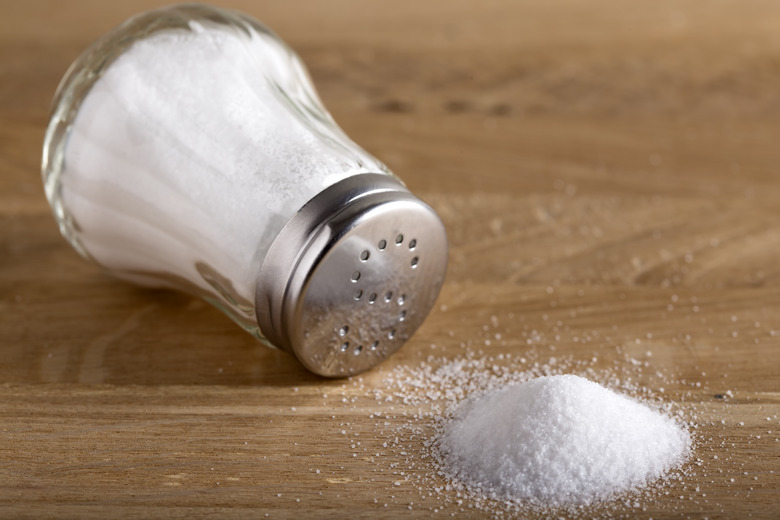How To Make A Five Percent Solution With Salt
A salt solution, also called a saline solution, is simply a mixture of salt and water. Salt is the solute (the dissolving substance), and water is the solvent (the substance that dissolves another to create a solution). To make a salt solution by weight percent (w/v), you apply the formula w/v = (mass of solute ÷ volume of solution) × 100. The density of water is 1 gram per milliliter (g/ml) which means 1 milliliter of water weighs 1 gram.
Things Needed
- Salt
- Scale
- Water
- Graduated cylinder/volumetric flask
1. Determine Final Volume
Work out how much salt solution you need. For this example, say you need 200 ml of salt solution.
2. Work out Percentage
Work out 5 percent of 200, i.e., 0.05 × 200 = 10. To make a 10 percent salt solution, work out 10 percent of 200 and so on. You can also work this out by re-arranging the formula, but multiplying the final volume by the decimal form of the percentage is simpler.
3. Weigh Salt
Weigh 10 grams of salt. You can use any type of salt, including table salt.
4. Dissolve Salt
Pour the salt into a graduated cylinder or volumetric flask containing about 180 ml of water. Swirl the flask gently until all the salt dissolves.
5. Add Water
Add enough water to bring the final volume up to 200 ml. Don't simply measure 200 ml of water and add 10 g of salt. Adding salt changes the final volume of the solution and affects the final percentage.
Cite This Article
MLA
Gillespie, Claire. "How To Make A Five Percent Solution With Salt" sciencing.com, https://www.sciencing.com/make-five-percent-solution-salt-8076940/. 25 July 2019.
APA
Gillespie, Claire. (2019, July 25). How To Make A Five Percent Solution With Salt. sciencing.com. Retrieved from https://www.sciencing.com/make-five-percent-solution-salt-8076940/
Chicago
Gillespie, Claire. How To Make A Five Percent Solution With Salt last modified March 24, 2022. https://www.sciencing.com/make-five-percent-solution-salt-8076940/
